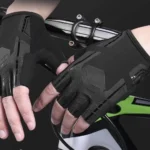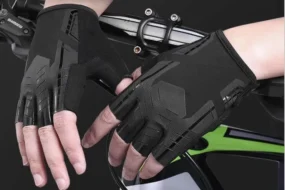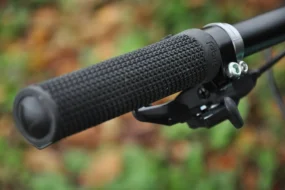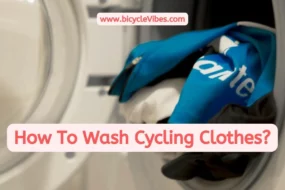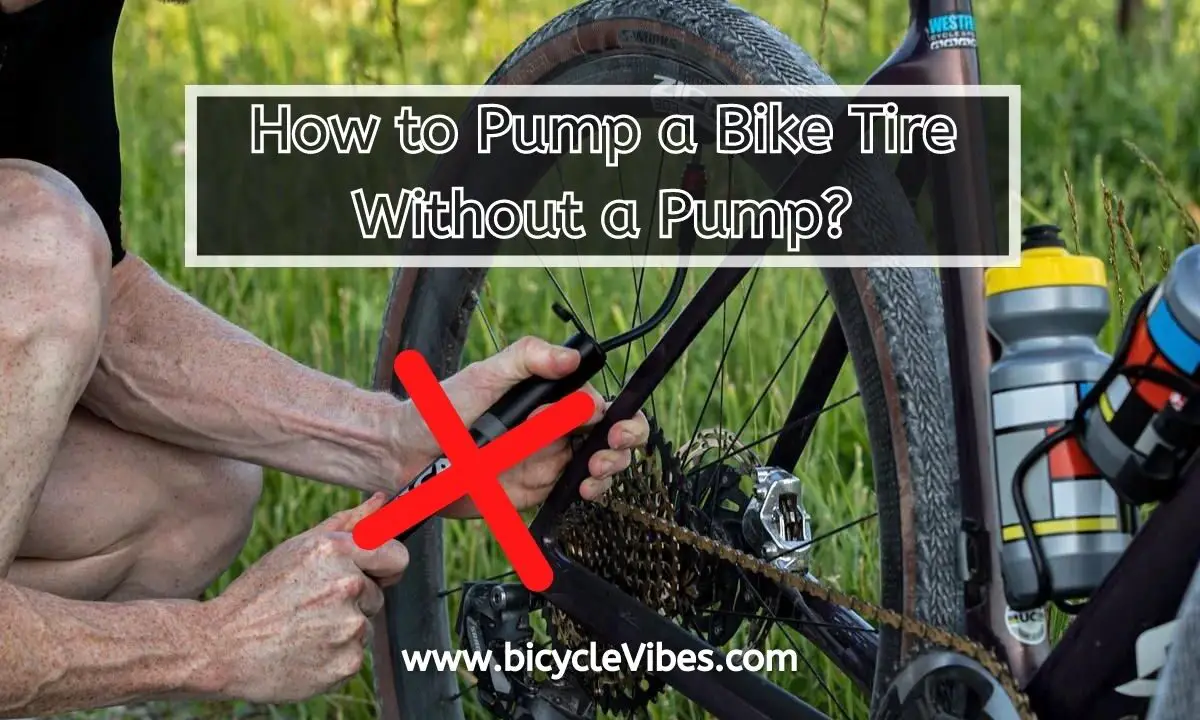
Pumping your bike tires is usually a quick and easy task that you can do in your garage or a local bike shop with a floor pump or mini-pump. But what if you love to bike in remote natural areas where there’s no nearby pumping station? If you have a flat tire, your cycling adventure could quickly turn into a dangerous situation. That’s why it’s crucial for outdoor cycling enthusiasts to know how to pump a bike tire without a pump. Keep reading to find out more.
How to Put Air in Bike Tires Without a Pump?
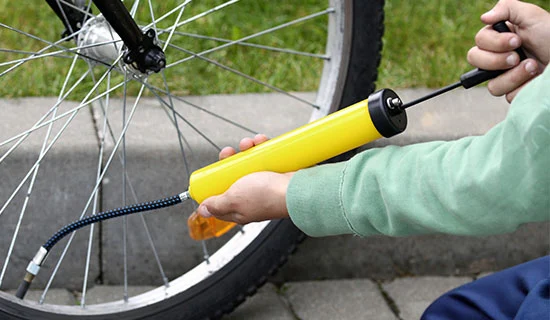
Using a CO2 Cartridge
The most popular method among cyclists is also the simplest.
However, it’s important to note that this is just a temporary solution, as the CO2 will quickly disappear. You’ll need to pump in real air as soon as possible.
Here’s what you’ll need:
1. Remove the dust cap
Before getting started, it’s important to remove the dust cap. This helps prevent dust and particles from mixing with the pressurized air in the tire. Make sure to put the dust cap in a safe place where it won’t get lost or damaged.
2. Examine the tire, then attach the inflator head to the cartridge
Before inflating, inspect your tire and tube to ensure they’re in good condition.
Next, attach the inflator head to the neck of the CO2 cartridge.
- For threaded cartridges, turn the cartridge until you feel resistance.
- For non-threaded cartridges, simply push until you feel resistance. Do NOT push beyond this point, as it can release high-pressure air from the canister.
3. Remove the Inflator Head from the Valve
Once you’ve reached the desired tire pressure, carefully remove the inflator head from the valve to prevent any excess air from leaking out.
4. Remove the Inflator Head from the Valve
Finally, retrieve the dust cap that you set aside earlier. Put it back on the tip of the valve and make sure it covers the entire tip, with no spaces between the cap and the valve.
With the dust cap securely in place, you’re now ready to hit the road again!
Manual Pumping
If you don’t have any pumping equipment, manual pumping is an option. This involves using your own breath to inflate the tire.
While this may not be the most hygienic method, it can be a lifesaver if you’re in a bind. However, it’s important to remember that this is just a temporary fix and real air should be pumped in as soon as possible.
To use this manual pumping method, you’ll only need a clean cloth or your shirt to clean the valve. That’s it! You can use your breath to pump air into the tire.
1. Remove the dust cap
To start, remove the valve cover and set it aside in a safe place where it won’t get lost or damaged.
2. Clean the valve
Next, clean the parts of the valve that will come into contact with your mouth using a clean cloth or your shirt. This helps ensure that there are no dirt or particles that could interfere with the pumping process.
3. Pump Air into the valve using your mouth
Begin the process by blowing a small amount of air into the tire through the valve. Check to see if the tire is properly aligned with the rim. If it’s not, make adjustments until it’s in the right position.
Once you’ve started the pumping process, continue until you’ve reached the desired tire pressure. With each breath, you’ll add more air to the tire until it’s fully inflated.
4. Return the dust cap
When you’ve finished pumping, it’s time to put the dust cap back on the valve. Make sure the cap covers the entire tip, with no spaces between it and the valve. This helps keep dirt and other particles out of the tire, ensuring it stays properly inflated.
DIY Pumping
Another option for pumping up a bike tire without a pump is a DIY method using tools and equipment you may have nearby. Here’s what you’ll need:
- A source of pressurized air: This could be dry ice, an old tire, or a non-flammable gas canister.
- A valve adaptor
1. Remove the dust cap
2. Connect your valve adaptor to the pressurized air source
It’s important to be careful during this step to avoid any air leaks. Make sure the valve adaptor is a precise fit for the opening of the pressurized air source container. This helps prevent any air from escaping before it gets into the bike tire.
3. Connect the valve adaptor to the tire valve
Once the valve adaptor is in place, the transfer of air can begin. Keep adding air to the tire until you reach the desired pressure or until the pressurized air source is exhausted. It’s important to monitor the tire pressure to make sure it doesn’t go above the recommended levels, as this can cause the tire to burst or become damaged.
4. Remove the valve adaptor the tire valve
After you’ve achieved the desired tire pressure, it’s important to remove the valve adaptor carefully. Make sure that during the removal process, the valve seal remains clamped onto the tire valve to prevent any air from escaping. This ensures that the tire stays properly inflated for your next ride.
5. Return the dust cap
Once you’ve completed the pumping process, it’s time to put the dust cap back on the valve. This helps to protect the valve from dust and other particles that could get into the tire. Simply place the dust cap back over the valve tip, making sure there is no space between the dust cap and the bicycle valve. This final step ensures that your tire stays protected and ready for your next ride.
To Sum Up
Inflating a bike tire without a pump may seem like a challenge, but don’t worry! This article will guide you through the most common methods. Just follow the steps carefully to avoid damaging your bike tire.
Are you ready to bike wherever, without the worry of a flat tire? Here’s what you need to know. First, understand the different methods to inflate a bike tire without a pump. Then, follow the specific steps for each method explained in this article.
By following these guidelines, you’ll be able to inflate your bike tire easily and quickly. And, if you found this article helpful, don’t hesitate to share it with others who may also benefit from the guide.
Read Also: How to Use an Air Compressor with a Presta Valve?
Related Q&A
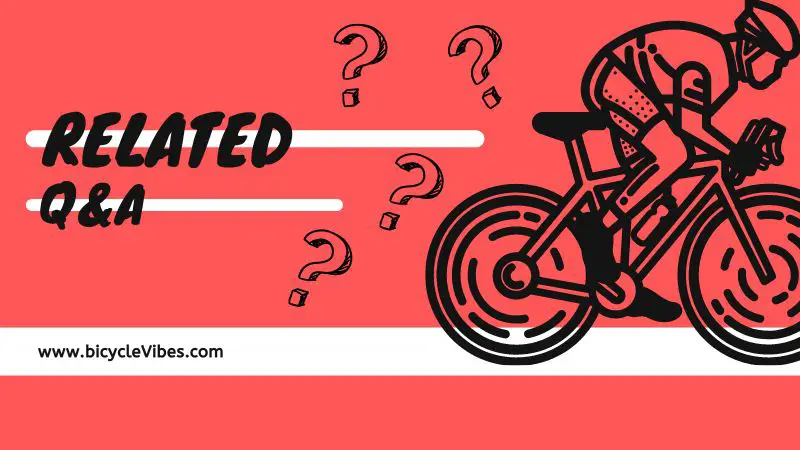
- What do you need to pump a bike tire without a pump? A pump-free method requires a bicycle pump adapter, a foot pump, or a manual pump.
- Can you use a foot pump to pump a bike tire without a pump? Yes, a foot pump works as an alternative to a bicycle pump.
- How do you use a bicycle pump adapter without a pump? Attach the adapter to a gas station air pump, insert the valve onto the bike tire, and pump air.
- Can you use a manual pump to inflate a bike tire? Yes, a manual pump can be used to fill air into a bike tire.
- How do you use a foot pump on a bike tire? Step on the foot pump’s pedal to fill air into the bike tire via the valve.
- What is the advantage of using a manual pump to pump a bike tire? A manual pump is always available and doesn’t require any electricity.
- Can you use a gas station air pump without a pump? Yes, use a bicycle pump adapter to connect the gas station air pump to the bike tire valve.
- Is it easy to pump a bike tire without a pump? It is a simple process as long as you have the right tools and follow the steps.
- How long does it take to pump a bike tire without a pump? It depends on the type of manual pump used and the tire’s initial air pressure.
- Can you pump a road bike tire without a pump? Yes, you can use the same pump-free method for road bikes as for any other type of bicycle.



